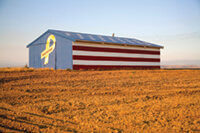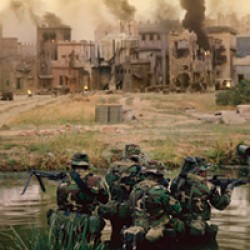Combat Impact
Non-metro areas take greater brunt of the war in Iraq.

Soldiers fighting in Iraq who come from rural America are dying at rates higher than their urban counterparts, a recent study finds. ISTOCK
Rural America can add another item to the list of ways it differs from its big-city counterparts.
A study conducted by Katherine Curtis, a UW assistant professor of community and environmental sociology, has found that, while fighting in Iraq, military troops from rural areas have experienced higher death rates than those from urban areas.
Regardless of cause or military branch, death rates are higher among rural soldiers, suggesting that non-metropolitan areas more keenly feel the consequences of war and that military personnel from rural areas are at a disadvantage, according to the study, published in July in the journal Demographic Research.
Curtis wrote the study with Collin Payne ’08, who is now studying at the University of Pennsylvania.
“Rural communities are, in fact, experiencing a disproportionate brunt of the impacts of war,” Curtis says. Although the study does not look into the reasons for the higher death rate, it provides a baseline for future research on the effect of the inequality, she says.
Disproportionate military deaths may also perpetuate the reasons rural youth join the military, Curtis says, adding that the effect on the available labor force makes it harder for their communities to attract industries and jobs.
The study uses U.S. Department of Defense data about troop deaths in Iraq from the start of the war in March 2003 through the end of 2007. The combat-related death rate for all troops was 3.43 per 1,000
individuals. Among troops from urban areas, the death rate was 3.27, while rural troops experienced a rate of 4.09. While the difference is a single person per 1,000 in population, the loss has a greater impact in rural areas because of the lower population concentrations, the study says. The research also found that states feeling the loss the most are in the Great Plains and the Upper Midwest.
Published in the Winter 2010 issue



Comments
No comments posted yet.